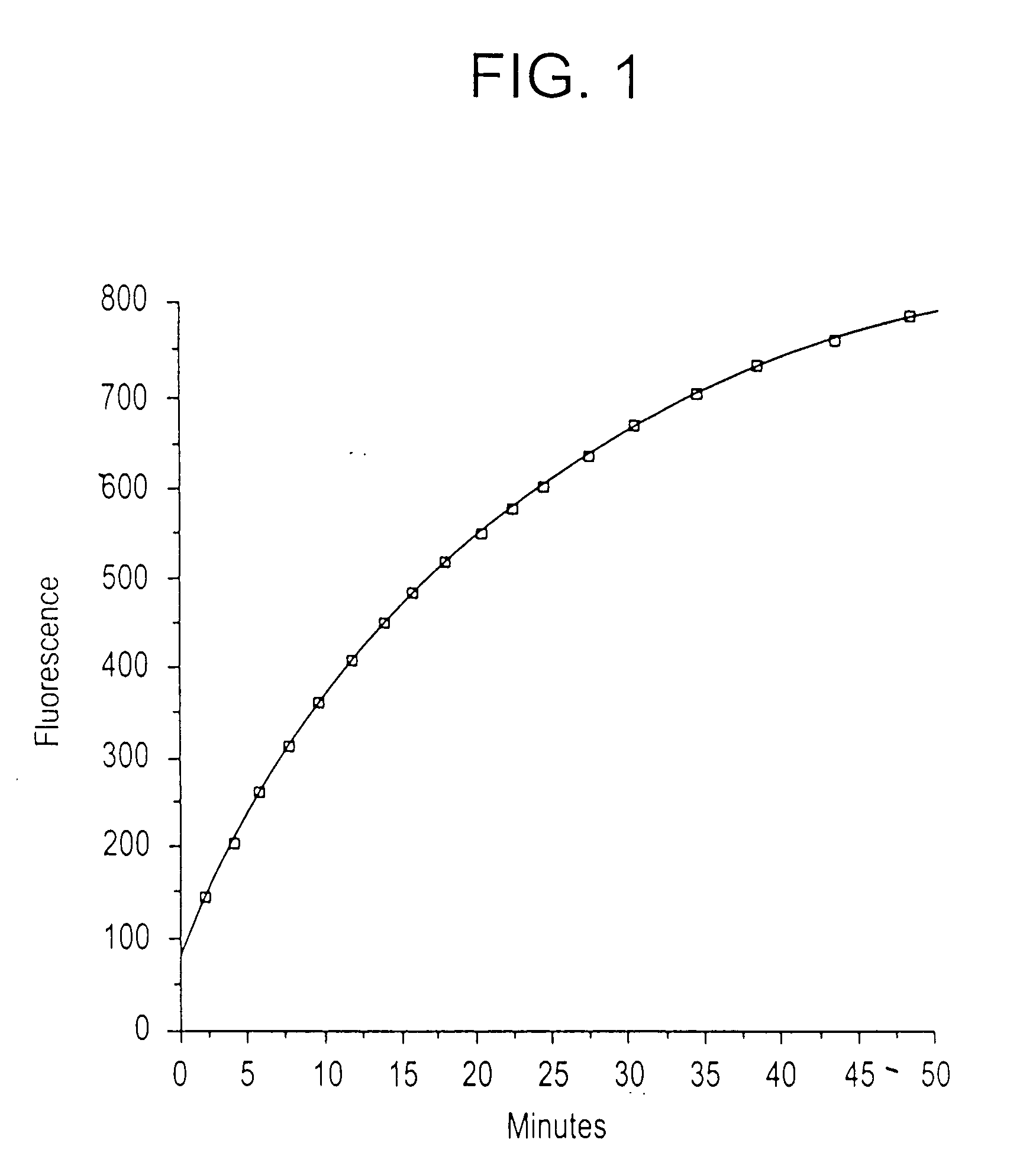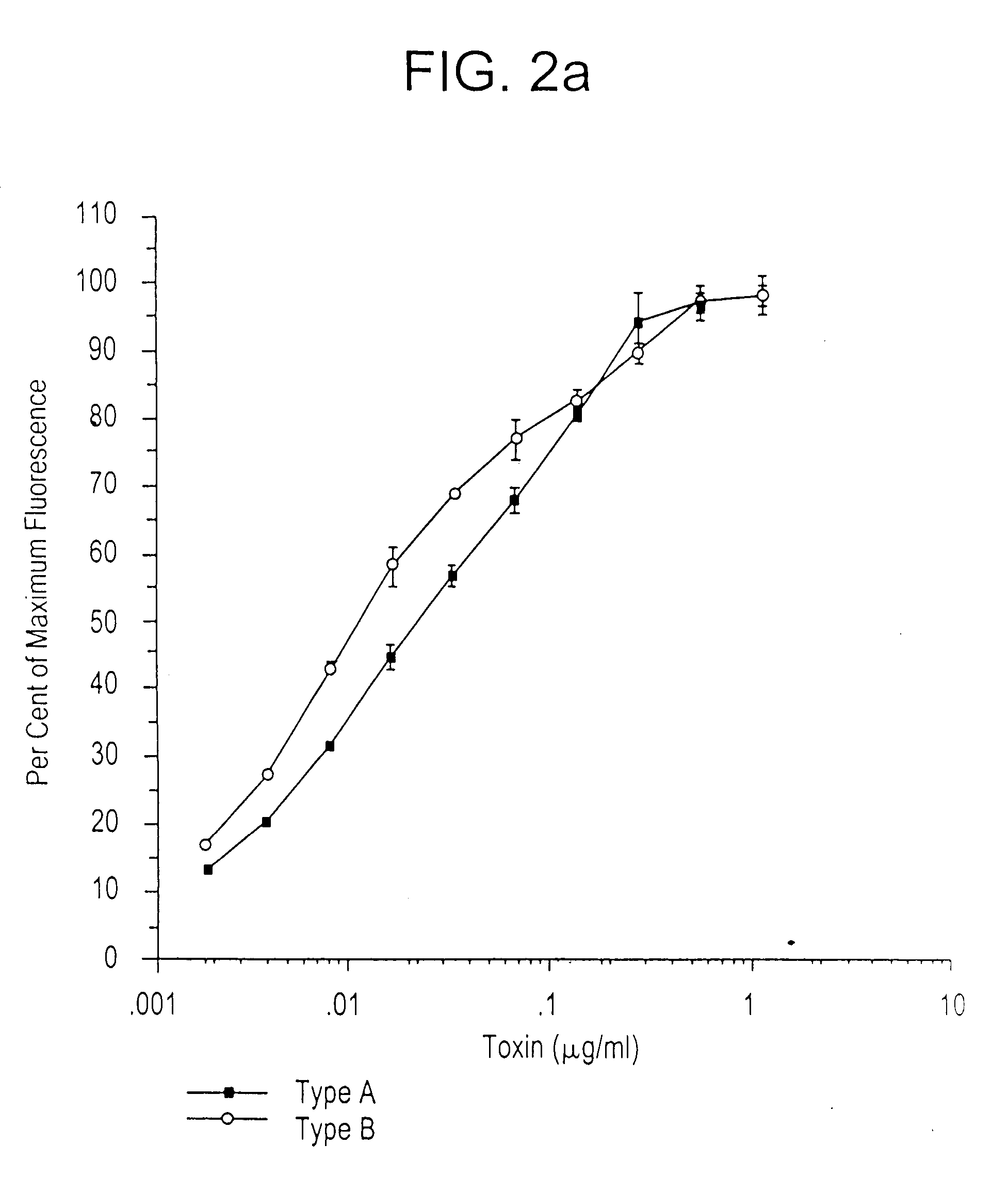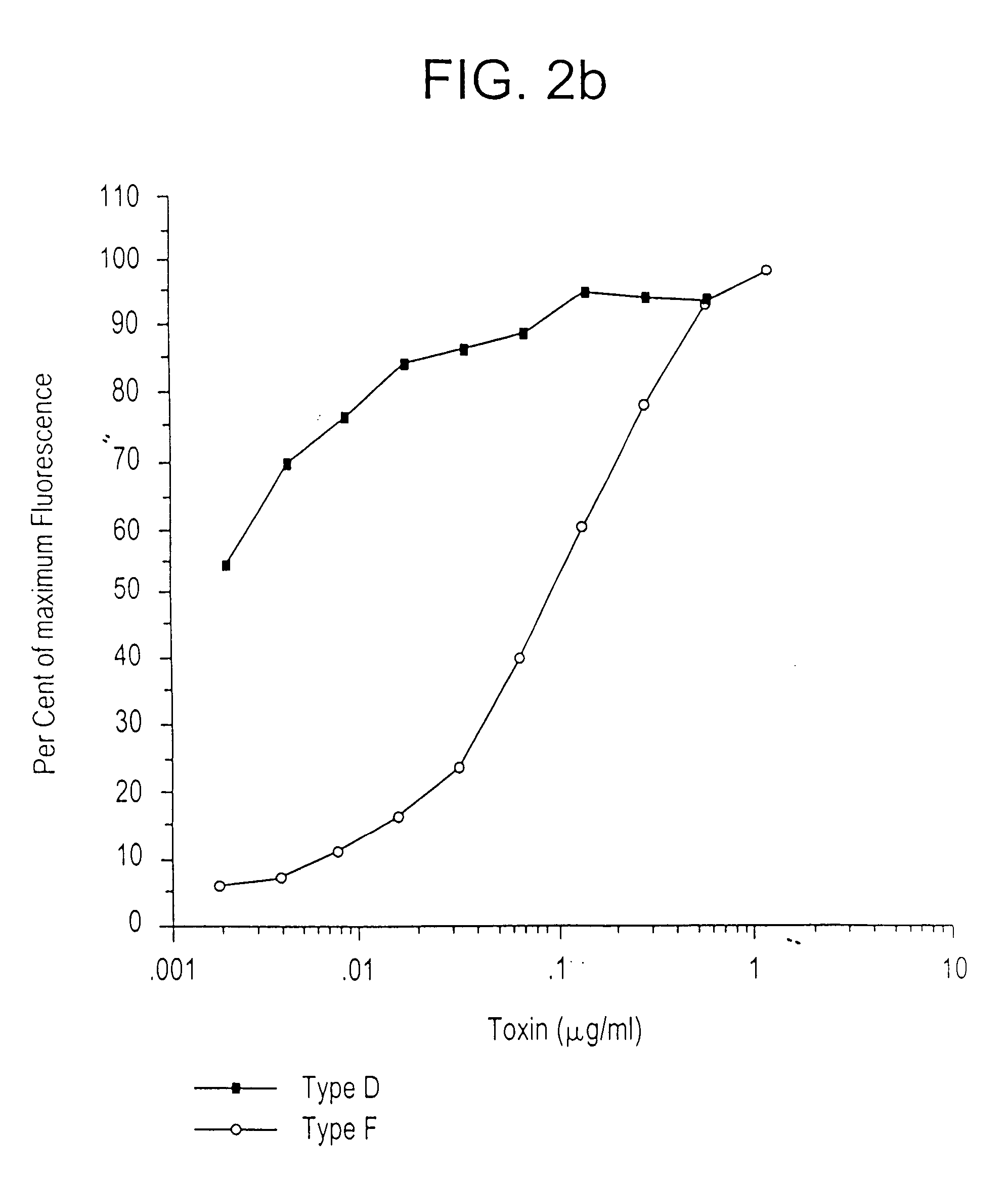High throughput assays for the proteolytic activities of clostridial neurotoxins
a clostridial neurotoxins and proteolytic activity technology, applied in the direction of peptide/protein ingredients, peptide sources, instruments, etc., can solve the problems of incomplete loss of substrate function, affecting the development of such assays, and introducing non-natural amino acids and/or bulky aromatic or fluorescent groups
- Summary
- Abstract
- Description
- Claims
- Application Information
AI Technical Summary
Benefits of technology
Problems solved by technology
Method used
Image
Examples
example 1
[0114] Operation of the Invention Using a Type (I) Substrate:
[0115] In this case, the substrate was the peptide described in substrate (1) above, and the enzyme was a recombinant preparation of type A botulinum toxin catalytic domain (also known as “type A light chain”). A solution of 30 micromolar peptide was prepared in water, buffered at pH 7.3, and containing 0.05% v / v tween-20. Before addition of enzyme, fluorescence was measured to obtain the background or “zero-time” fluorescence. Enzyme was then added to a concentration of two micrograms per ml, and the resulting increase in fluorescence due to proteolysis of the peptide was measured with time. Assay temperature was 21° C. In the absence of enzyme, fluorescence changed very little with time, less than ±5%. Results are shown in FIG. 1. The initial rate of hydrolysis can be calculated from the slope of the line in the early (essentially linear) part of the curve. Using known concentrations of toxin or light chain, a correlati...
example 2
[0116] Operation of the Invention Using Type (II) Substrates:
[0117] In this example, the substrates were the peptides described in substrate (9) for botulinum type A, substrate (10) for type B, and substrate (11) for types D and F. The “solid material” to which the substrates were immobilized were 96-well microtiter plates that were chemically modified to contain maleimide groups (see “Materials and methods” section). FIG. 2 depicts fluorescence solubilized by different concentrations of botulinum toxins, serotypes A, B, D, and F (3 hours, 35° C.). For each serotype, maximum fluorescence was defined as that solubilized by 1 microgram per ml toxin under these conditions. The Y-axis extends above 100% to accomodatel2:31 PM the error bars. Panel (a) shows BoNT A and B; panel (b) shows BoNT D and F.
PUM
| Property | Measurement | Unit |
|---|---|---|
| pH | aaaaa | aaaaa |
| pH | aaaaa | aaaaa |
| emission wavelengths | aaaaa | aaaaa |
Abstract
Description
Claims
Application Information
 Login to View More
Login to View More - R&D
- Intellectual Property
- Life Sciences
- Materials
- Tech Scout
- Unparalleled Data Quality
- Higher Quality Content
- 60% Fewer Hallucinations
Browse by: Latest US Patents, China's latest patents, Technical Efficacy Thesaurus, Application Domain, Technology Topic, Popular Technical Reports.
© 2025 PatSnap. All rights reserved.Legal|Privacy policy|Modern Slavery Act Transparency Statement|Sitemap|About US| Contact US: help@patsnap.com



